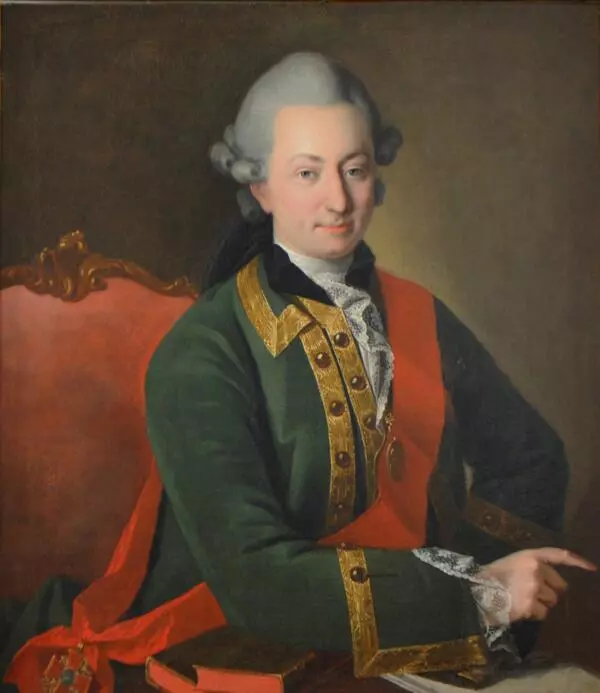In 1930, the Russian State Museum transferred the Portrait of an Unknown Woman in a Grey Dress to Vladivostok as the Portrait of Agrippina Aleksandrovna Kurakina painted by an unknown artist of the 18th century.
In more recent times, the painting was examined by Olga Batievskaia, Senior Researcher at the Primorye Picture Gallery. She wanted to establish the author and the date of the painting. In the archives of the Russian Museum, Batievskaia discovered an inventory card with pencil inscriptions saying ‘? Christineck’ and ‘Attributed to Rokotov.’
Boris Kosolapov, a Researcher at the Holdings Unit of the Russian Museum, compared the portrait from the collection of the Primorye Picture Gallery with the 18the century engraving by Antoin Radigue showing Agrippina Kurakina. The princess on the engraving was depicted with the monogram of Catherine the Great on a blue satin ribbon and looked much older than the girl on the portrait though both works were created at the same time.
The researchers came to the conclusion that Kurakina would have hardly posed for a painter without a symbol of her belonging to the Imperial Court and, consequently, the painting from the collection of the Primorye Picture Gallery could not be a portrait of the Princess.
However, an identical portrait by Carl Ludwig Christineck held in the Hermitage collection helped identify the author of the painting. Having examined the X-ray photographs of the pictures, the scientific and technological investigation unit at the Hermitage concluded that they had been painted by one and the same painter.
Carl Ludwig Johann Christineck was the first Russian painter of German origin. He was born in St. Petersburg to a family of a smallholder who had moved to Russia from Germany. In the Russian manner, he was called Loggin Zakharovich.
Christineck painted mainly the middle-class gentry, the military, intelligentsia, and representatives of the St. Petersburg German community. He rarely if ever painted influential court ladies of the 18th century or prominent public officials.
Christineck was an attentive and sensitive artist. His portraits are notable for accurate lines and pure colours. Christineck was very realistic in depicting costumes, hairstyles, and accessories of his models.
In more recent times, the painting was examined by Olga Batievskaia, Senior Researcher at the Primorye Picture Gallery. She wanted to establish the author and the date of the painting. In the archives of the Russian Museum, Batievskaia discovered an inventory card with pencil inscriptions saying ‘? Christineck’ and ‘Attributed to Rokotov.’
Boris Kosolapov, a Researcher at the Holdings Unit of the Russian Museum, compared the portrait from the collection of the Primorye Picture Gallery with the 18the century engraving by Antoin Radigue showing Agrippina Kurakina. The princess on the engraving was depicted with the monogram of Catherine the Great on a blue satin ribbon and looked much older than the girl on the portrait though both works were created at the same time.
The researchers came to the conclusion that Kurakina would have hardly posed for a painter without a symbol of her belonging to the Imperial Court and, consequently, the painting from the collection of the Primorye Picture Gallery could not be a portrait of the Princess.
However, an identical portrait by Carl Ludwig Christineck held in the Hermitage collection helped identify the author of the painting. Having examined the X-ray photographs of the pictures, the scientific and technological investigation unit at the Hermitage concluded that they had been painted by one and the same painter.
Carl Ludwig Johann Christineck was the first Russian painter of German origin. He was born in St. Petersburg to a family of a smallholder who had moved to Russia from Germany. In the Russian manner, he was called Loggin Zakharovich.
Christineck painted mainly the middle-class gentry, the military, intelligentsia, and representatives of the St. Petersburg German community. He rarely if ever painted influential court ladies of the 18th century or prominent public officials.
Christineck was an attentive and sensitive artist. His portraits are notable for accurate lines and pure colours. Christineck was very realistic in depicting costumes, hairstyles, and accessories of his models.








